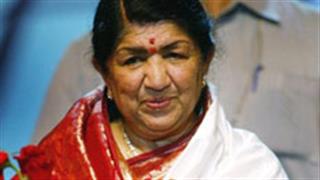The songs are like a caress on your skin. Rest assured, Jagjit Singh`s newest offering, Aaeena, attempts a dalliance with the different emotions of hope, sorrow, loss, regret and meditation, and succeeds beautifully. The album has drawn from a pool of talent for lyrics. This, interwoven with Singh`s superior music, makes for a vintage collection, to be treasured for a long time.
The title track, Tera chehra hai aaeene jaisa, is a voice of hope. The euphoria is languorous, as Singh holds your hand and takes you through the nuances of a woman`s beauty. It almost seems like he had an indulgent smile on his face when he sang this song.
Uski baten to phool hon jaise takes on a slightly different turn. A kiss of pleasant memories make their appearance here, and this is a slight veering from the theme of pathos unconsciously established. The prelude sounds familiar, and you soon realise that it has traces from Anu Malik`s Tere dar par sanam, from the film Phir Teri Kahani Yaad Aayi. But the similarity ends there.
Parakhana mat is filled with wisdom, as is evident in the line Bade logon se hamesha faasla rakhna. It is difficult to put your finger on the exact emotion - there is caution and a tinge of disappointment. The song also has its moments of hope.
Phir nazar se pila dijiye is another brush with ecstasy, but there is nothing hurried about it. There is a wonderfully plaintive appeal to the song, and Singh peppers it with lazy warmth, that flirts with your senses. You could detect a bit of resemblance to Alka Yagnik`s Saare sapne kahin kho gaye from Tum Yaad Aaye, especially in the opening lines, but the song goes on to assume a distinct identity of its own.
Thankfully, unlike with other albums, Side B is not fleshed out as a country cousin of Side A. It opens with the masterful Muskurakar mila karo humse, which is a honeyed rendition of hope and futility. Singh is rueful in the song, and the music is subtle, without resorting to high notes.
Disillusionment takes over in Kanton se daaman uljhana, and Singh is a in a meditative mood here. A tapestry of emotions is explored here, ranging from defeat to quiet contemplation. The lyrics by Payam Saeedi ably support this ditty.
Kya bhala hai kya bura hai carries the rumination forward, but the mood changes to one of introspection. There is a sense of longing, but it is different from that conveyed in Shaam se aankh mein nami si hai in Marasim. There was hope there. Hopelessness reigns supreme here.
Side B closes with Badal ki tarah jhoom ke, which is intoxicating. The song invokes Bacchus, and typifies an important characteristic of the genre. Ghazals with references to sharaab are aplenty. Remember Hariharan`s Tujhe kasam hai saathiya, sharaab la, sharaab de? This track meanders through a variety of feelings, and instances of a crescendo occur in the interlude, perfectly offsetting the overall meditative mood.
Aaeena is another of Jagjit Singh`s gems. Though it does not belong to the high-profile cadre of Marasim, it slowly finds a place in your heart.


















